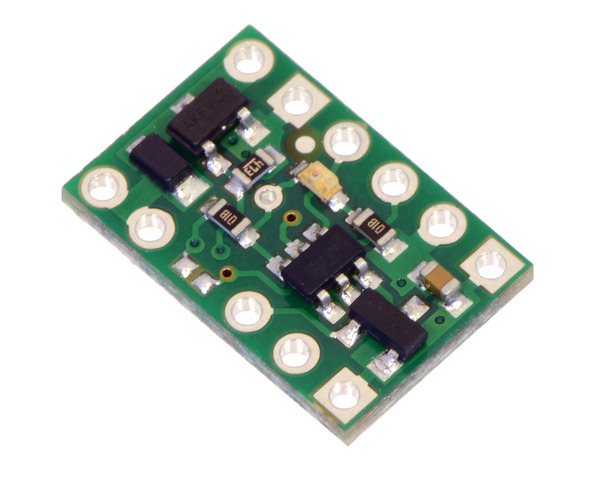

This is a merged information page for Item #2802.
View normal product page.
Pololu item #:
2802
Brand:
Pololu
Status:
Active and Preferred

This RC switch converts hobby radio control pulses to digital on/off signals and has an integrated small, low-side MOSFET that allows it to drive small loads (up to around 3 A), such as lighting or small actuators. The activation threshold and direction are configurable, and a safe-start feature reduces the likelihood of unexpected activation.
 Compare all products in RC Switches.
Compare all products in RC Switches.
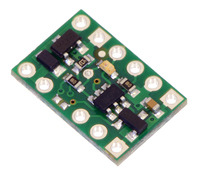 |
Pololu RC Switch with Small Low-Side MOSFET. |
|---|
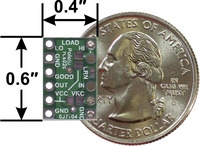 |
Pololu RC Switch with Small Low-Side MOSFET, bottom view with dimensions. |
|---|
 |
Pololu RC Switch with Small Low-Side MOSFET with included hardware. |
|---|
 |
Pololu RC Switch with Small Low-Side MOSFET on a breadboard. |
|---|
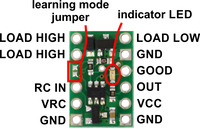 |
Pololu RC Switch with Small Low-Side MOSFET, top labeled view. |
|---|
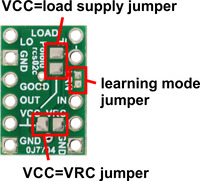 |
Pololu RC Switch with Small Low-Side MOSFET, bottom view with jumpers labeled. |
|---|
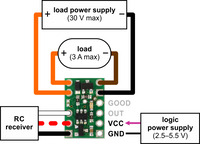 |
Pololu RC Switch with Small Low-Side MOSFET, typical wiring diagram. |
|---|
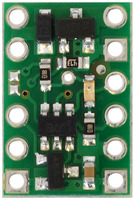 |
Pololu RC Switch with Small Low-Side MOSFET, top view. |
|---|
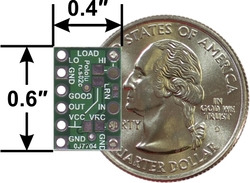 |
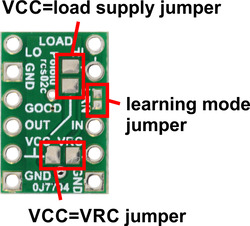 |
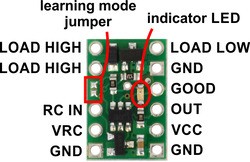 |
The Pololu RC switch with Small Low-Side MOSFET can be used with standard hobby radio control systems for radio control switch applications or simple interface applications. Example uses include converting extra RC receiver or servo controller outputs to simple high/low signals that can control LEDs or relays and connecting RC systems to microcontroller projects that do not have the necessary resources for decoding the RC interface. Two outputs indicate the presence of a valid signal and whether the switch is on or off, and an integrated low-side MOSFET turns on when the switch is on, allowing the board to drive small loads directly. The switch also features a flyback (or freewheeling) diode across the load outputs so that you can connect a coil to them, such as a motor or relay, without any additional external components.
The board requires a 2.5–5.5 V power source supplied to VCC. The board’s MOSFET can deliver up to around 3 A with VCC at 5 V and can handle load supply voltages up to 30 V.
The RC switch measures the width of incoming RC pulses and compares it to a user-configurable threshold (with ±64 µs of hysteresis) to decide whether to turn on the MOSFET. By default, the threshold is approximately 1700 µs, with switch activation occurring above the threshold (longer pulses), but the switch has a learning mode that allows you to change the threshold and the activation direction. A safe-start feature reduces the likelihood of unexpected activation.
This compact unit measures 0.4″ × 0.6″ and weighs just over 0.5 g (0.02 oz) without the included header pins.
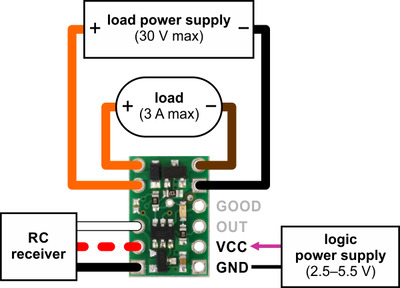 |
Pololu RC Switch with Small Low-Side MOSFET, typical wiring diagram. |
|---|
The RC switch provides feedback about what state it is in via a yellow indicator LED. Status information is also provided on two output pins:
More information about using the Pololu RC switch with Small Low-Side MOSFET can be found in the user’s guide.
A 12-pin 0.1″ straight breakaway male header is included with the Pololu RC Switch with Small Low-Side MOSFET (note: this might ship as two 1×6 strips rather than a single 1×12). The header pins can be used to connect the RC switch to perfboards or breadboards.
|
|
We offer an RC switch with a digital output for applications that just require a low-current digital signal and an RC switch with a medium MOSFET that can switch more current and has an integrated regulator. We also offer an RC switch with a relay that can be used to control electrically isolated loads.
This product replaces item #1210. (For most applications, it can be considered a drop-in replacement for #1210.)
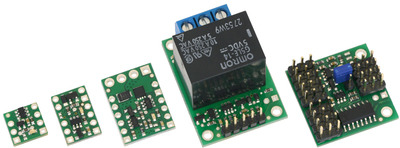 |
The Pololu RC Switch family of products. |
|---|
| Size: | 0.4″ × 0.6″ |
|---|---|
| Weight: | 0.5 g1 |
| Maximum output current: | 3 A |
|---|---|
| Minimum logic voltage: | 2.5 V |
| Maximum logic voltage: | 5.5 V |
| PCB dev codes: | rcs02c |
|---|---|
| Other PCB markings: | 0J7704 |
User’s manual for the Pololu RC Switch with Medium Low-Side MOSFET and the Pololu RC Switch with Relay.
Printable schematic diagram of the Pololu RC Switch with Small Low-Side MOSFET.
This DXF drawing shows the locations of all of the board’s holes.
No FAQs available.
RPicSim is an open source software library written in Ruby that provides an interface to the MPLAB X PIC simulator and allows you to write...